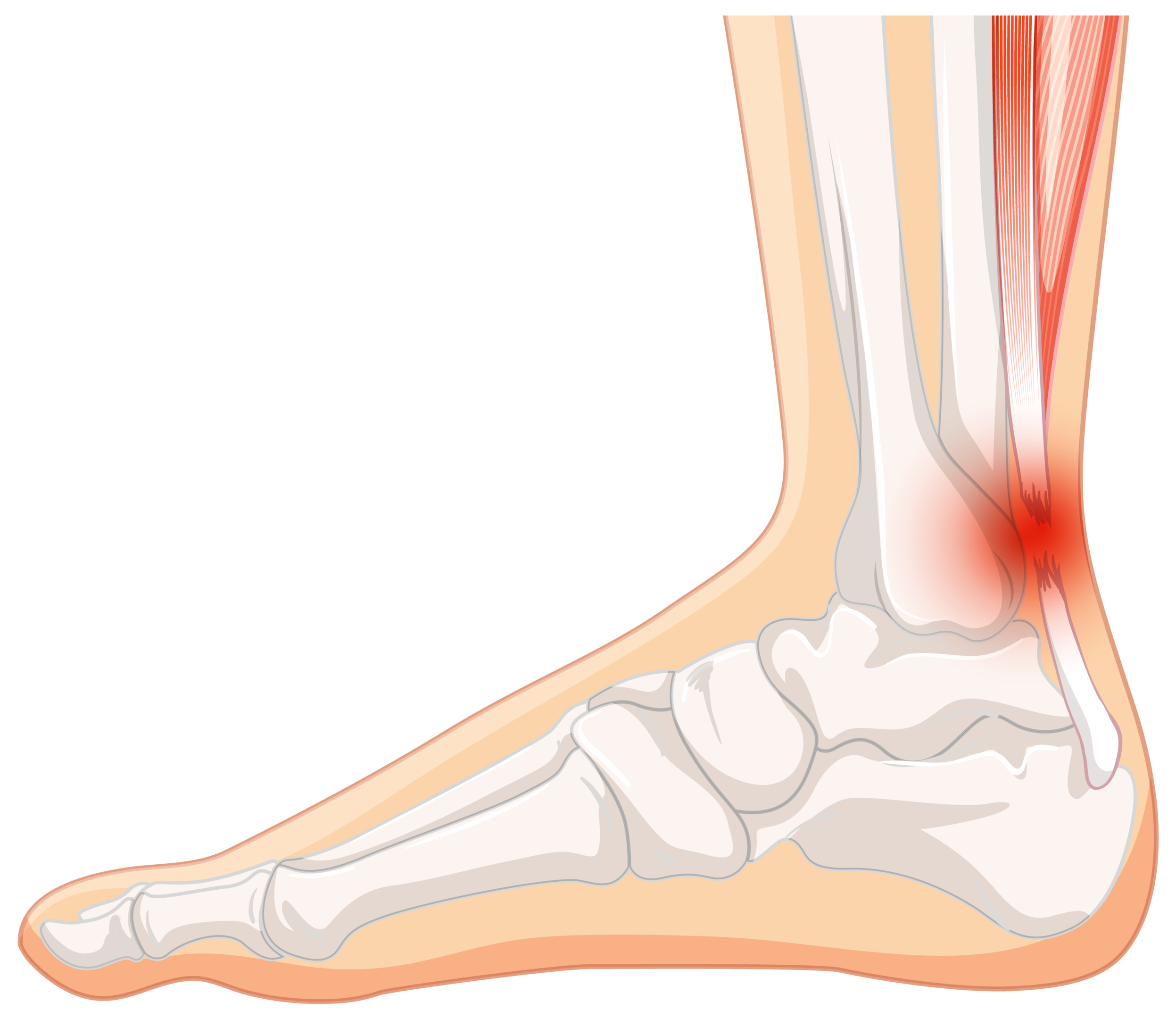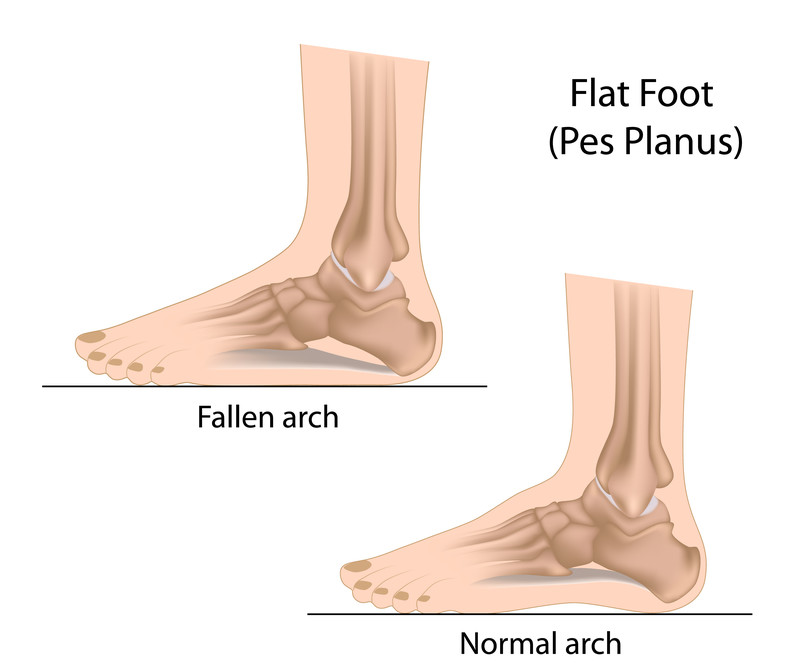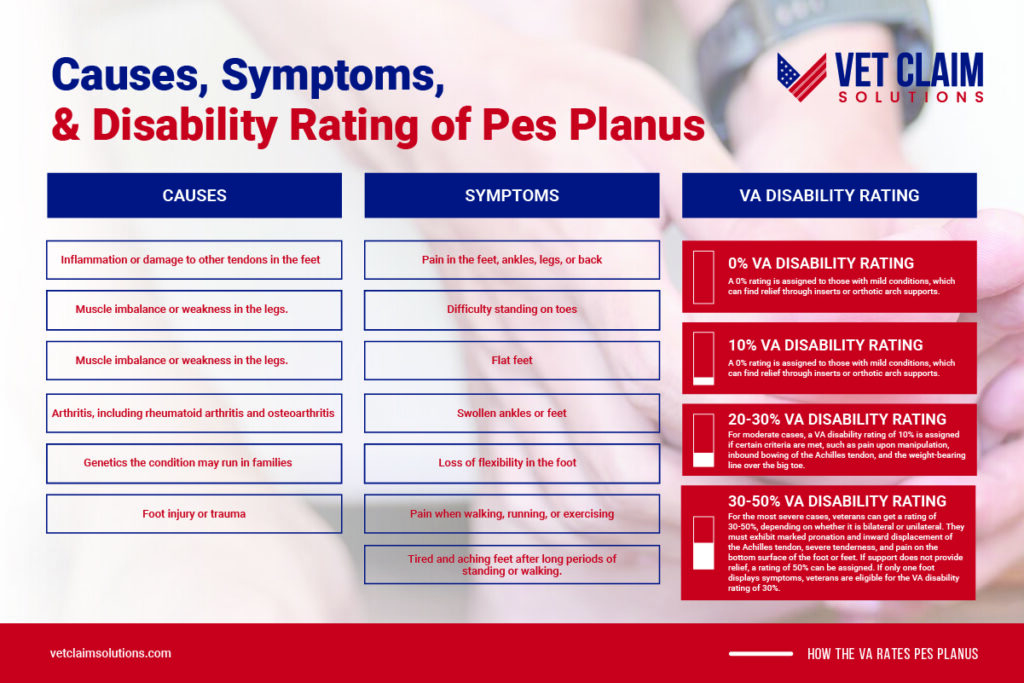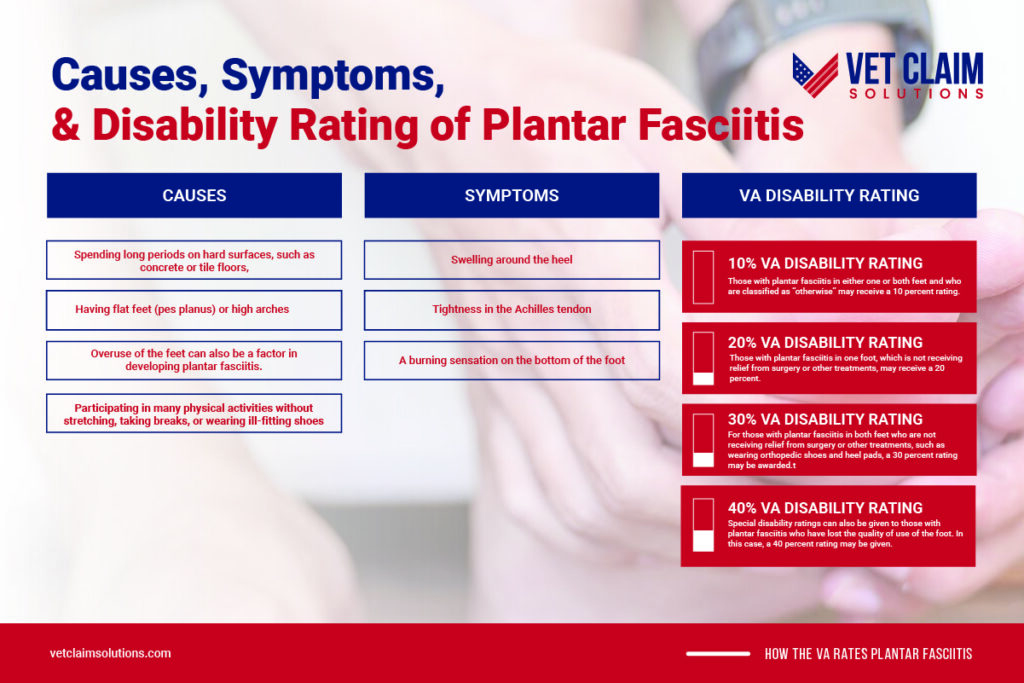
Are you a veteran diagnosed with Pes Planus or Plantar Fasciitis? If so, you may be wondering how the VA rates your condition. Both conditions can cause pain, inflammation, and other symptoms, affecting your everyday life. In this blog post, we will discuss how the VA rates Pes Planus and Plantar Fasciitis conditions, their medical criteria for rating these conditions, and how you can apply for disability compensation. With this information, you will better understand what to expect when applying for VA disability benefits. We hope that this article helps make the process easier for you.
Why is a Veteran Prone to Foot Problems?
Veterans are prone to foot problems due to the heavy physical activity involved in their jobs. Since many veterans spend their time running, jumping, and carrying heavy loads, they often suffer from painful foot conditions such as pes planus (flat feet) or plantar fasciitis. To accommodate this, the VA has put procedures in place to ensure veterans receive the care they need for these conditions.
Pes Planus Defined
Pes planus, or flat feet, is a condition in which the foot’s arch collapses and flattens. This can cause pain in the feet, ankles, and legs and fatigue when standing or walking for long periods.

Causes and Symptoms of Pes Planus

Causes:
The most common cause of pes planus is tibialis posterior tendon dysfunction, when the tendon inside the ankle becomes overstretched or torn. Other causes may include the following:
- Inflammation or damage to other tendons in the feet
- Muscle imbalance or weakness in the legs.
- High-impact physical activities, such as running or jumping
- Arthritis, including rheumatoid arthritis and osteoarthritis
- Genetics the condition may run in families
- Foot injury or trauma
Symptoms:
Symptoms of pes planus can vary from person to person. Common symptoms may include:
- Pain in the feet, ankles, legs, or back
- Difficulty standing on toes
- Flat feet
- Swollen ankles or feet
- Loss of flexibility in the foot
- Pain when walking, running, or exercising
- Tired and aching feet after long periods of standing or walking.Breitling replica uk
Plantar Fasciitis Defined

Plantar fasciitis is a painful condition affecting the plantar fascia, a thick band of tissue connecting the heel bone to the toes. This condition can cause severe pain in the heel and arch of the foot, which is usually worse during or after activity.
Causes and Symptoms
Causes:
Common causes of plantar fasciitis include
- spending long periods on hard surfaces, such as concrete or tile floors,
- having flat feet (pes planus) or high arches,
- participating in many physical activities without stretching, taking breaks, or wearing ill-fitting shoes.
- Overuse of the feet can also be a factor in developing plantar fasciitis.
Symptoms:
The primary symptom of plantar fasciitis is a sharp, stabbing pain in the heel and arch area of the foot. This pain usually increases with weight-bearing activities such as walking or standing and is usually the most severe in the morning upon waking. Other symptoms may include
- swelling around the heel
- tightness in the Achilles tendon
- a burning sensation on the bottom of the foot.
VA Rating Scale for Pes Planus
The VA evaluates pes planus on a case-by-case basis. Generally, these conditions are rated under 38 CFR § 4.71a, Diagnostic Code 5276, which states that a medical evaluation will determine the severity of the disability. The rating scale for pes planus is from 0-50%, with higher percentages awarded to those suffering from severe symptoms.

0% VA Disability rating
A 0% rating is assigned to those with mild conditions, which can find relief through inserts or orthotic arch supports.

10% VA Disability rating
For moderate cases, a VA disability rating of 10% is assigned if certain criteria are met, such as pain upon manipulation, inbound bowing of the Achilles tendon, and the weight-bearing line over the big toe.

20-30% VA Disability rating
Severe cases are rated 20-30%, depending on whether the condition is bilateral or unilateral. Qualifying criteria include pain when the foot is used or manipulated, swelling after use of the foot, and the presence of characteristic callosities.

30-50% VA Disability rating
For the most severe cases, veterans can get a rating of 30-50%, depending on whether it is bilateral or unilateral. They must exhibit marked pronation and inward displacement of the Achilles tendon, severe tenderness, and pain on the bottom surface of the foot or feet. If support does not provide relief, a rating of 50% can be assigned. If only one foot displays symptoms, veterans are eligible for the VA disability rating of 30%.
VA Rating Scale for Plantar Fasciitis
The VA Rating Scale for Plantar Fasciitis is designed to ensure veterans with this painful foot condition receive the compensation they deserve. Effective February 7, 2021, the highest rating for plantar fasciitis is 40 percent. Disability ratings are available in 30, 20, and 10 percent, depending on the severity of the injury.

10% rating:
Those with plantar fasciitis in either one or both feet and who are classified as “otherwise” may receive a 10 percent rating.

20% rating:
Those with plantar fasciitis in one foot, which is not receiving relief from surgery or other treatments, may receive a 20 percent.

30% rating:
For those with plantar fasciitis in both feet who are not receiving relief from surgery or other treatments, such as wearing orthopedic shoes and heel pads, a 30 percent rating may be awarded.

40% rating
Special disability ratings can also be given to those with plantar fasciitis who have lost the quality of use of the foot. In this case, a 40 percent rating may be given.
Can a Vet be Rated for Both Pes Planus and Plantar Fasciitis?
Yes, if a veteran is found to have both conditions and is affecting the same foot or feet, they can be rated for both of them. However, only one rating should be assigned, and the other condition must be noted in the disability rating.
For example, if a veteran has Pes Planus with a 30 percent rating, Plantar Fasciitis can be noted as part of that rating. The veteran should submit evidence to support both conditions to receive the appropriate rating.
The VA has designed a disability rating system for flat feet and plantar fasciitis to ensure veterans with these conditions get the compensation they deserve based on their level of disability. However, it is important to note that each case is different and must be evaluated individually to ensure veterans receive the correct rating.
How to Get Service Connection for Pes Planus and or Plantar Fasciitis

Direct Service
To establish a service connection for flat feet or plantar fasciitis, you must provide evidence that the condition is related to your military service. One of the best ways to build this connection is to show a ‘medical nexus‘ between an in-service event and your current condition. This includes providing medical records from both before and after your time in service. Additionally, you may need to demonstrate that the condition developed gradually over time or resulted from a specific incident or injury.

Aggravation Due to Service
Veterans who were already diagnosed with pes planus or plantar fasciitis before entering military service may be able to claim compensation for any worsening of their condition due to their service. Medical records must show that the injury was not temporary to prove a connection between military service and aggravation. A doctor must certify in writing that the new injury was caused by military service and not natural disease progression. In such cases, veterans may be eligible for compensation benefits to cover treatment costs, disability payments, and other forms of financial assistance. Additionally, veterans may also be able to receive access to specialized treatments or therapies that are designed specifically for their condition.

Secondary Service Connection
Veterans who receive a diagnosis of pes planus or plantar fasciitis after they leave the military may claim a secondary service connection if they can prove their heel pain developed or worsened due to an existing rated condition. To qualify for a VA disability rating for either pes planus or plantar fasciitis, veterans must provide documentation of the following:
- A current diagnosis of plantar fasciitis on file with the Department of Veterans Affairs
- Evidence of a primary service-connected disability that is related to the secondary disability of plantar fasciitis
- Medical evidence establishing a connection between the two disabilities
What to Expect at a C&P Exam

The Department of Veterans Affairs sometimes requires further evidence to determine the severity of a veteran’s impairment and provide the correct disability rating. To assess this, a veteran may need to take part in a C&P exam. A C&P exam for pes planus or plantar fasciitis will include a physical examination of the feet for tenderness, swelling, calluses, and any pain or functional impairment.
Additionally, a doctor may order X-rays to investigate foot deformities, such as calcified heel spurs.
During the C&P exam, veterans will need to provide information about how heel pain affects their life, such as the inability to walk long distances. Veterans need to be prepared and provide an accurate and detailed description of their symptoms and difficulties.
VA doctors can assess the condition through a combination of medical evidence and the veteran’s testimony and assign an appropriate disability rating. With this documentation and the correct rating, veterans may be eligible for compensation benefits, specialized treatments or therapies, and other financial assistance.
Need Help Filing a Claim for Pes Planus and or Plantar Fasciitis?
If you are a veteran struggling with pes planus and/or plantar fasciitis and are looking for a service connection for your condition, reach out to us today. Our Claims Coaches have years of experience getting service connections for individuals with these conditions and are ready to help you get the compensation you deserve.



This Post Has One Comment
My brother recommended I migh like this webb site. He was entirely right.
This submit truly made my day. You cann’t believe just how so much
time I had spent for this info! Thank you!